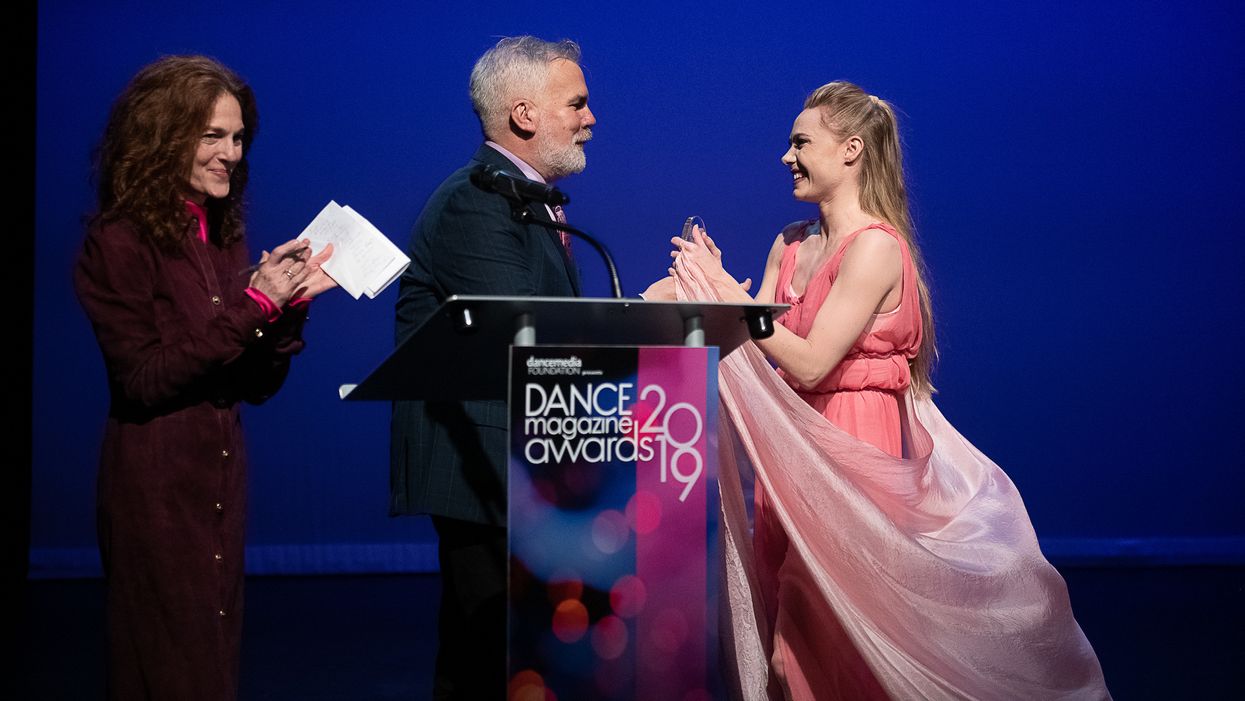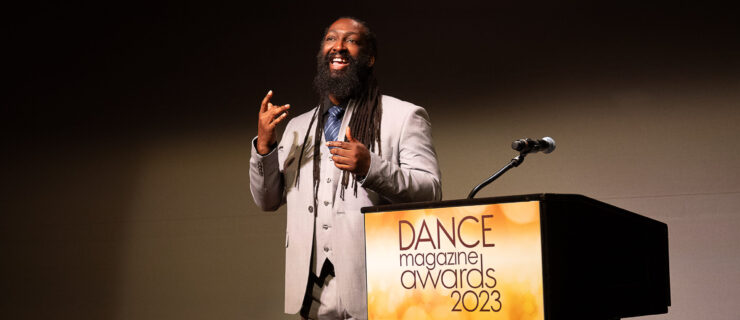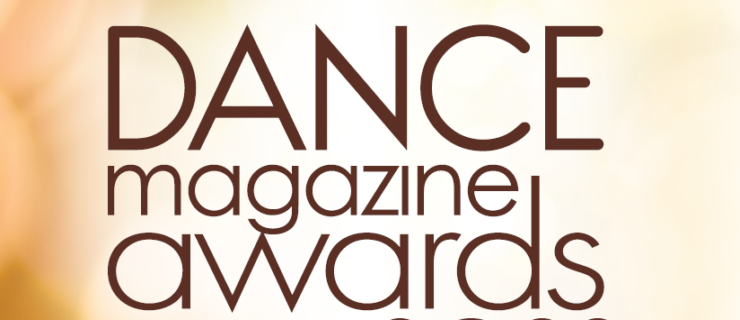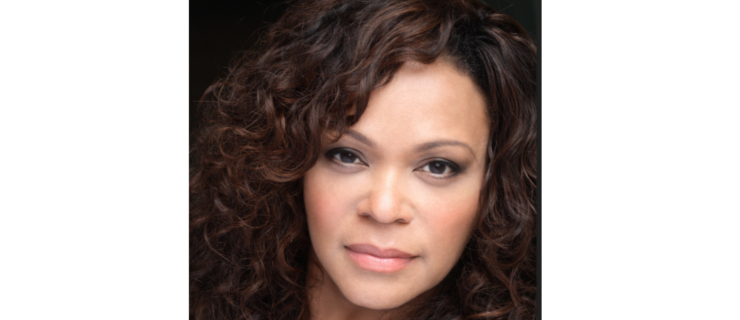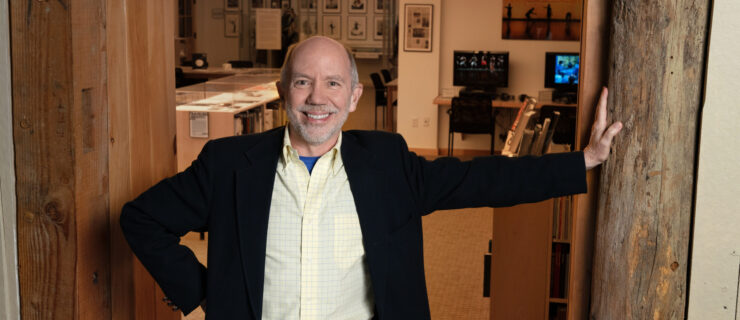The Dance Magazine Awards Celebrate Everything We Love About Dance
What a night. The Dance Magazine Awards yesterday at the Ailey Citigroup Theater was jam-packed with love for dance.
From legendary icons to early-career choreographers we can’t stop obsessing over, the Dance Magazine Awards, presented by the Dance Media Foundation, recognized a wide spectrum of our field.
And with more performances than ever before, the night was an incredible celebration of the dance community. As host Wendy Perron pointed out, in many ways, we doubled the usual fun this year: Some honorees had two performances, some had two presenters, and David Gordon and Valda Setterfield were themselves, well, two awardees.
We saw two sides of Sara Mearns

The performance started off with the grand, opulent dancing of Sara Mearns in George Balanchine’s Walpurgisnacht Ballet, which was amazing to witness up-close in the intimate black box theater. As presenter Jodi Melnick put it, Mearns is known for her fierce, abundant beauty in ballet. Presenter Marc Happel, director of costumes at New York City Ballet, shared that even in rehearsal when many dancers are marking, Mearns gives 110 percent, making it feel like an opening night.
But we also got to see the new side of Mearns, as her curiosity has led her to investigate other dance forms. In Harp Etude, choreographed by Lori Belilove after Isadora Duncan, Mearns showcased an earthy, flowing musicality. As soon as she finished, pianist Cameron Grant, who accompanied her live onstage, was the first to shout, “Bravo.”
Mearns said the evening felt like the Oscars for her, and she shared her gratitude for all of the opportunities she’s had. She confessed that she feels “like the luckiest dancer in the world” to have Jonathan Stafford and Wendy Whelan as her directors at NYCB. “Sometimes I just go into the theater and sit and stare and can’t believe I get to dance there,” she said.
But she also admitted that she never thought she’d be able to escape the ballerina bubble and try other kinds of movement, both with choreographers like Justin Peck and Alexei Ratmansky at NYCB, but also with everyone from Belilove to the Martha Graham Dance Company.
We felt the love of David Gordon and Valda Setterfield

Christopher Duggan
Wally Cardona and Karen Graham performed a version of David Gordon’s Close Up. In this tender, intertwined duet, the dancers support each other and slip out of one another’s grasp, their movement in conversation with a series of projected videos and photos of the duet performed by other couples (including Gordon and Valda Setterfield) as well as clips of couples in old Hollywood movies. It was incredibly touching—you could feel the love that went into creating it.
As presenters Eiko & Koma put it, Gordon and Setterfield have continuously proven that two people can create art and love throughout a lifetime.
Setterfield, in her acceptance, hilariously told the story of her love affair with dancing and with the audience. It started with her first solo at age 4, performed at a garden party. The choreography called for her to run around in a circle, then, when the music changed, to perform some impressive steps. Except when she got onstage, she forgot the steps, so she just kept running. And running. She could feel the audience reacting to her nonstop running, and she thought, “They’re supporting me! They’re interested in what I’m doing!” So she just kept running, and eventually ran offstage “to tremendous applause.”
Setterfield added that today, people still stop her in the street to tell her about performances they’ve seen her in. “I am thrilled all over again,” she said. “We are living in a ghastly time. But I feel useful. You, the audience, tell me I help.”
We witnessed the Ailey company’s incredible appreciation for Masazumi Chaya
 Christopher Duggan
Christopher Duggan
Alvin Ailey American Dance Theater pulled out its all-star team to celebrate associate artistic director Masazumi Chaya. The fierce Jacqueline Green and the ever-compelling Jamar Roberts performed Judith Jamison’s A Case of You, followed by Clifton Brown in Alvin Ailey’s virtuosic Pas De Duke.
Both artistic director emerita Judith Jamison and current artistic director Robert Battle took the stage to present to Chaya. Jamison recalled not only Chaya’s own energetic dancing, but how he used to sit in the wings and watch her almost every time she performed Cry. And how, when the company was struggling with finances early in her directorship and they didn’t have the funds to pay the dancers one week, Chaya told her, “I’ll pay them.”
Battle recounted how Chaya’s secret sauce was his love for the company and for Alvin Ailey—and the fact that Chaya has never stopped dancing. Even today, when a new choreographer comes in, Chaya’s on the floor, learning the steps alongside the dancers.
In his acceptance, Chaya spoke about his personal relationship with Dance Magazine, from the time he first picked up a copy in the late ’60s when he was invited to perform in the United States to how he ended up on a cover in 1994, shot by Jack Mitchell. And he admitted that when he got the call this year that we wanted to present him with a Dance Magazine Award, all he could say repeatedly was, “Oh my god, I cannot believe it. Thank you!”
We saw proof of Bobbi Jene Smith and Caleb Teicher’s promise
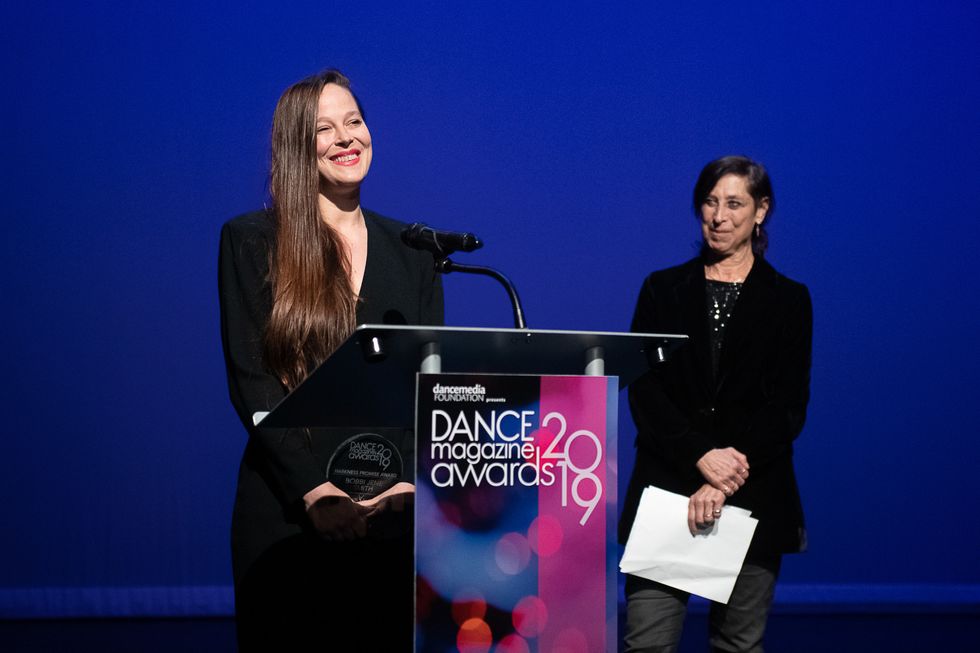
Christopher Duggan
Joan Finkelstein, executive director of the Harkness Foundation for Dance, proclaimed, “I love this field so much,” as she stood up to present the Harkness Promise Awards to Bobbi Jene Smith and Caleb Teicher.
Funded by the net proceeds of the event, the Harkness Promise Awards grant $5,000 and 40 hours of studio space to innovative choreographers in their first decade of professional work. We’re especially grateful to our corporate sponsors American Express, First Republic, Pennsylvania Ballet and Beautiful Planning Marketing PR in helping us meet our goals to fund another round of awards for next year.
We learned about Linda Shelton’s lifelong business savvy

Six powerful dancers from Evidence, A Dance Company performed Ronald K. Brown‘s exuberant, driving Gatekeepers in honor of Linda Shelton, who was given our Chairman’s Award.
In presenting to her, Christopher Wheeldon highlighted how the art she supports through her work at The Joyce Theater brings us all a little closer together. (She was instrumental in bringing his Alice’s Adventures in Wonderland to New York City.) For her part, Shelton recounted her lifelong passion for dance—and how as a kid she took over her brother’s paper route on Wednesday mornings in order to pay for her own dance classes.
We grew jealous of Angel Corella’s cheese diet

Rounding out the night, first soloist Albert Gordon channeled the onstage elegance and effervescence of his artistic director Angel Corella in Ali’s variation from Le Corsaire.
Presenter Michael Kaiser spoke of Corella’s magical presence as a dancer, of his pirouettes which somehow sped up with each revolution and his leaps that “made life worth living.” Kaiser was American Ballet Theatre’s executive director when a prodigious 19-year-old Corella joined the company, and he related how as talented as Corella was, he was still a bit naive: At one point he went on a diet that mainly consisted of cheese in an attempt to lose weight.
In his accepting his award, Corella spoke of how lucky he felt to have been a dancer. He thanked many people who had helped him in his career, but his biggest smile came out when talking about his team at Pennsylvania Ballet (many of whom were in the audience) and his dancers. “Albert Gordon does that a lot better than I used to,” Corella proclaimed.
Like many of the honorees, even in accepting his own honor, he used it to celebrate the dance community that surrounds him.
